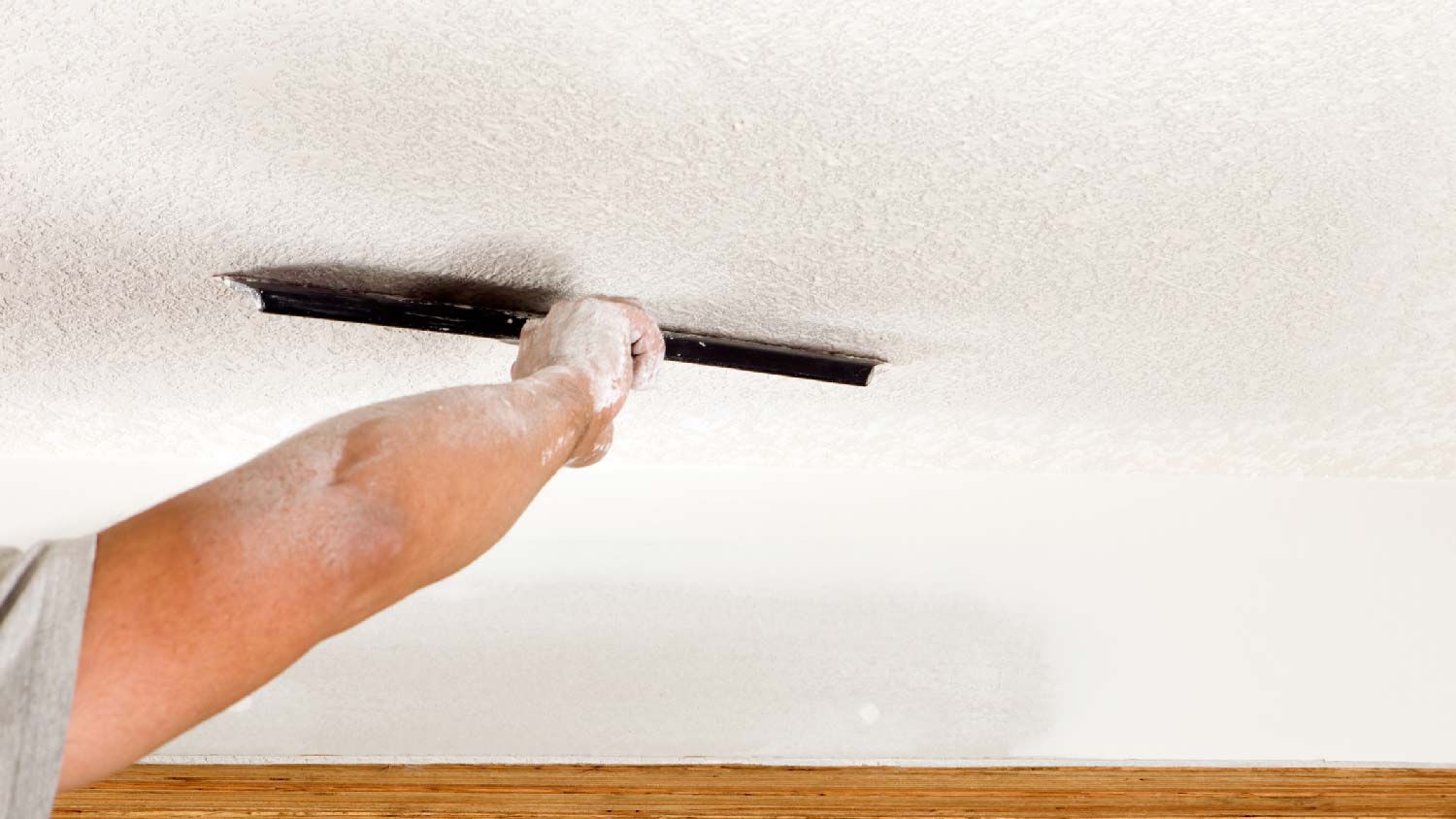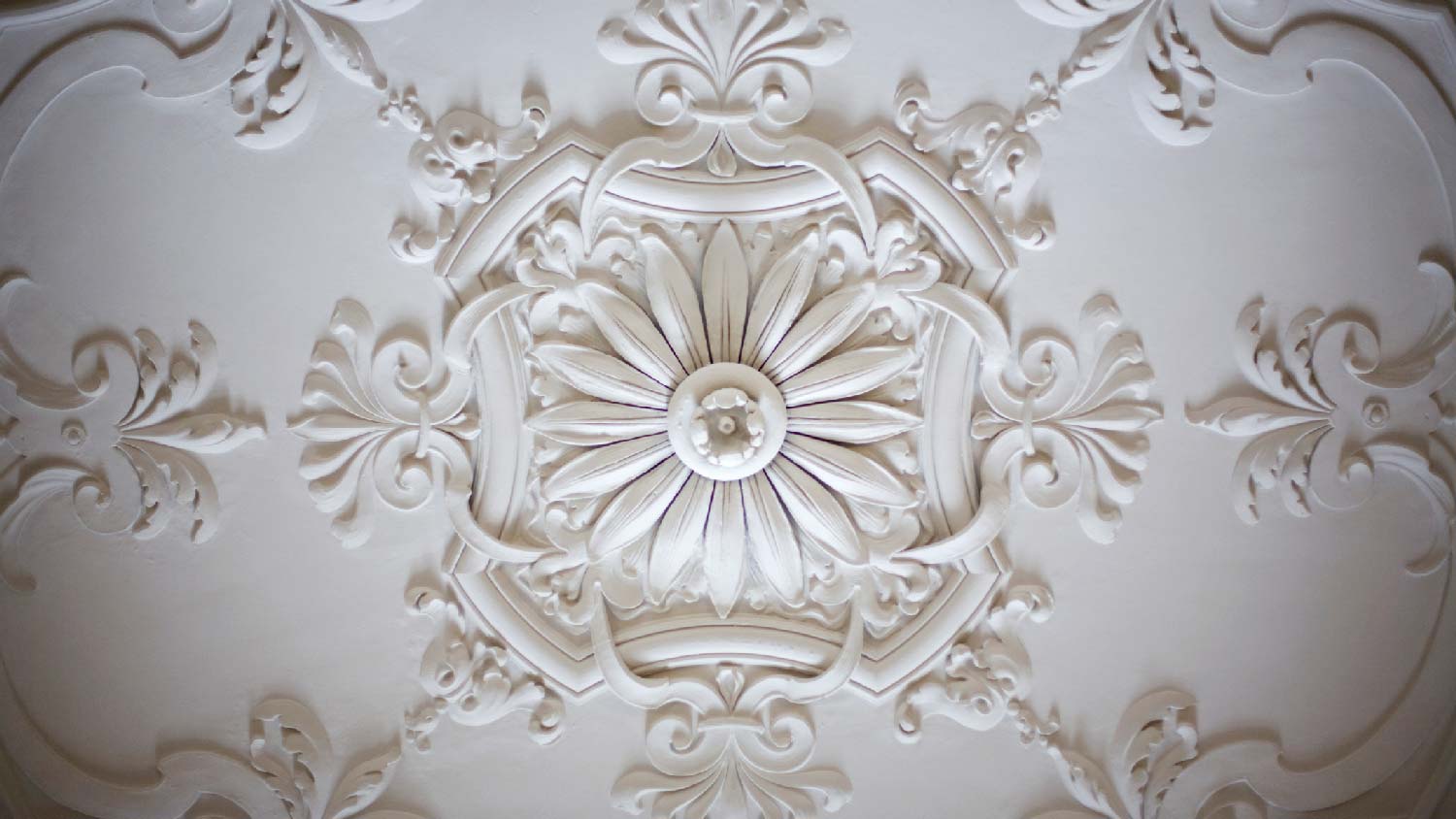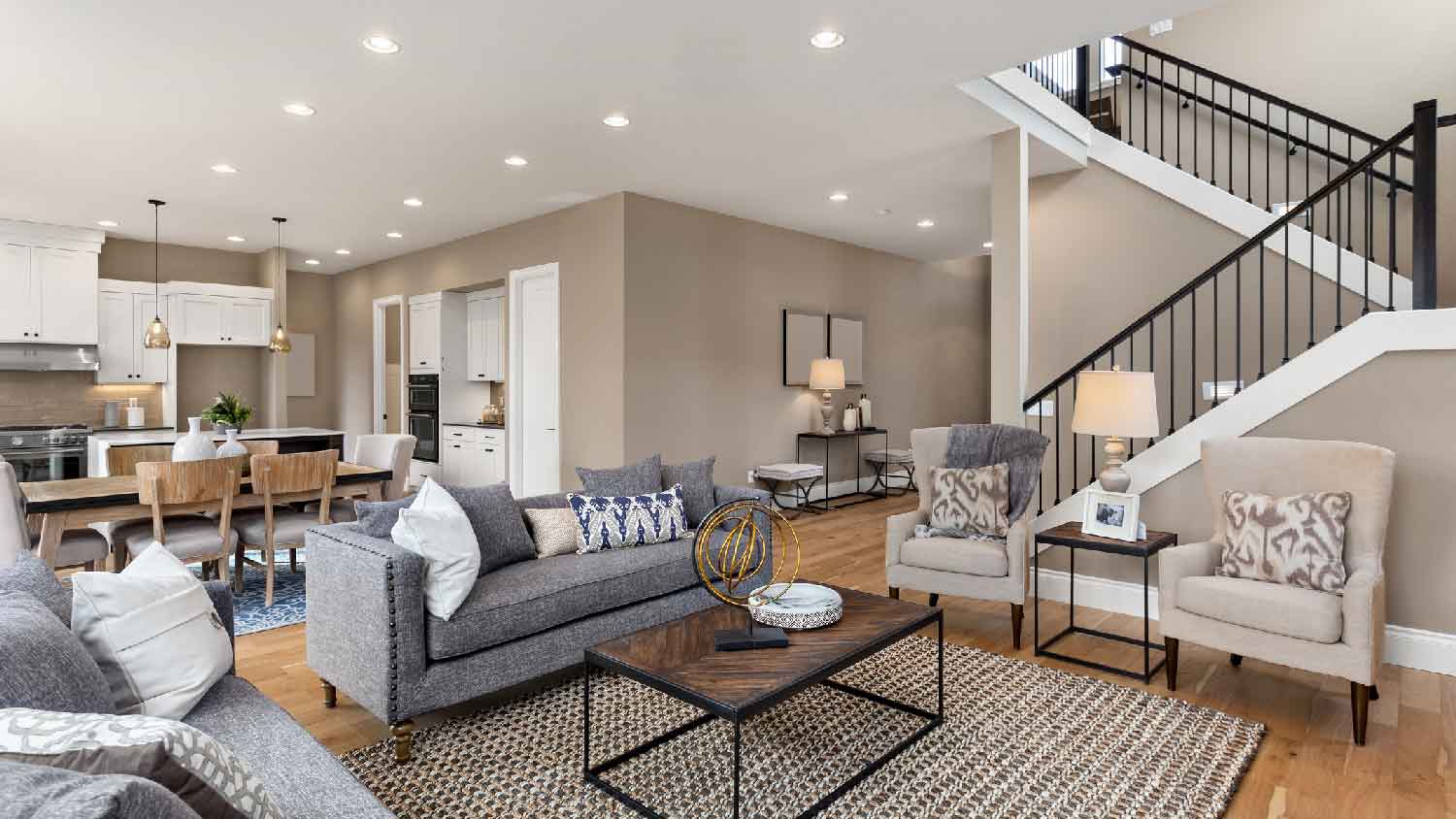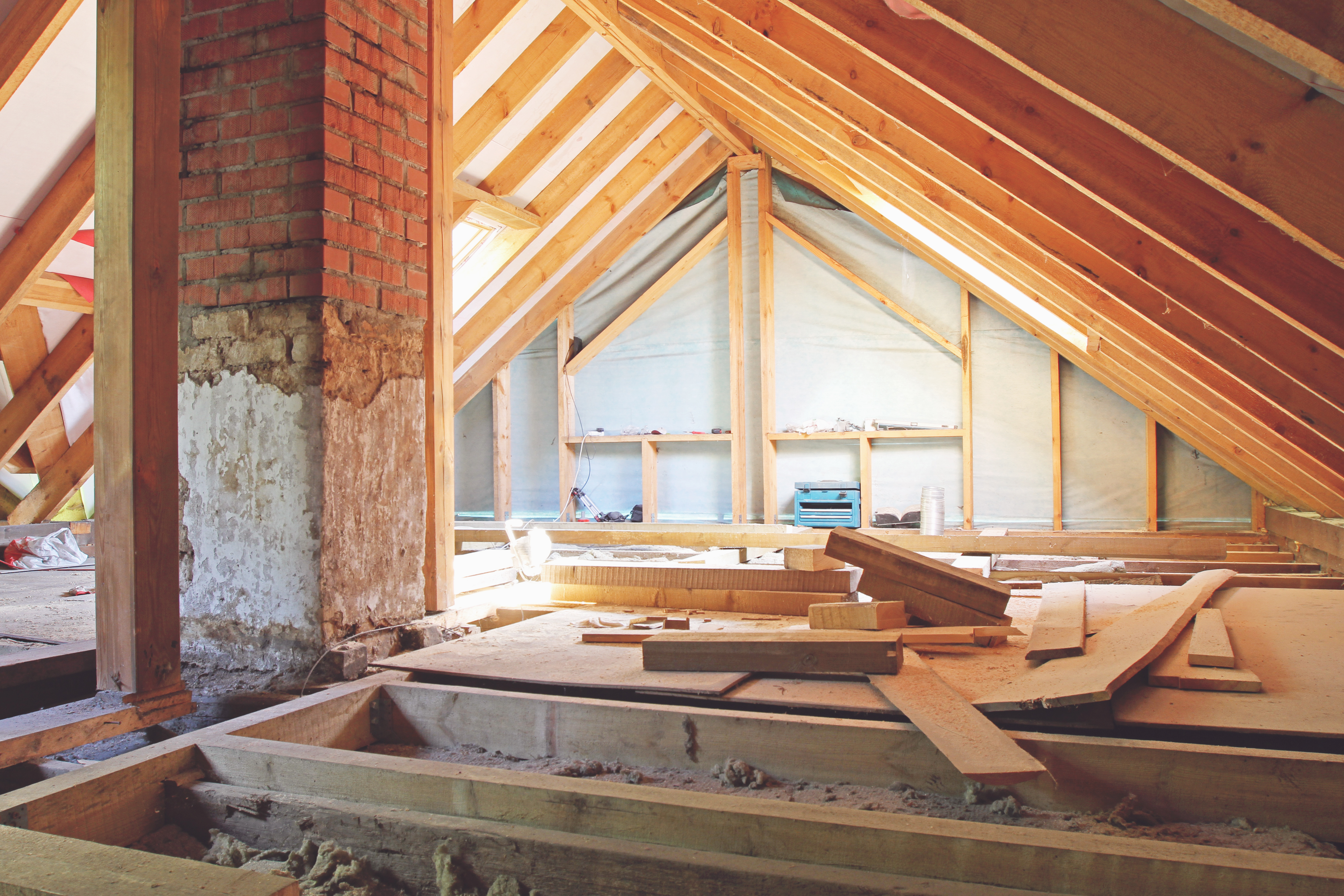
Building permits are essential. Here’s everything you need to know about building permit costs to budget accordingly for your building project.
Add a little texture to your life with these stylish ceiling ideas


Your choice of ceiling texture will largely depend on your style preference, but a ceiling company can advise on the application time.
Some textures, such as swirl, can overwhelm small spaces, so consider the room you’re working on.
Popcorn ceilings might have a somewhat dated feel, but they’re easy to apply and help soundproof a room.
A flat or smooth ceiling is elegant and can hide blemishes, but it’s surprisingly difficult to apply.
When done right, ceilings can completely transform a room's look and feel. From subtle patterns to bold designs, ceiling textures add dimension, style, and personality to your space. They also hide ceiling imperfections and dampen sound. Here are 15 unforgettable types of ceiling textures, including popcorn, orange peel, skip trowel, knockdown, and stippled.
Popcorn ceilings might remind you of a certain era (the 1950s to ’80s, to be exact), but they’re popular for a reason. Their rough, bumpy appearance, which can resemble the texture of popcorn or cottage cheese, is great for soundproofing. It’s easy for local ceiling companies to apply, too, adding to its appeal. Contractors create them by mixing drywall compound and polystyrene particles.
| Pros | Cons |
|---|---|
| Great sound absorption | Challenging to clean |
| Hides imperfections | Can look outdated |
| Easy to apply | Difficult and messy to remove or repair |
| Adds visual interest | Can contain asbestos in older homes |
Best for:
Soundproofing homes
Hiding ceiling defects
Picture the surface of an orange with small, flat-topped bumps—that’s what orange peel ceiling texture looks like. It’s a mixture of thin drywall mud sprayed at a high velocity onto ceilings and walls. It has a more subtle texture than popcorn ceilings but adds visual interest without being overpowering.
| Pros | Cons |
|---|---|
| Easy to apply | Difficult to dust and clean |
| Hides minor surface issues | Can chip or crack if damaged |
| Subtle, modern, and visually pleasing | Provides less soundproofing than bumpier textures |
Best for:
Homes with modern, minimalist decor
High-traffic areas like hallways that are prone to scuffing
DIY projects
Skip trowel texture has a plastered, stucco-like appearance. Contractors create it by spreading drywall mud with a trowel in a sweeping motion. This specialty application gives ceilings an old-world depth and artisan-like quality.
| Pros | Cons |
|---|---|
| Looks custom | Needs skilled application |
| Covers visual blemishes | More expensive than simple applications |
| Durable and resists cracking | Time-consuming to create |
Best for:
High-end homes with sophisticated textures and decor
Mediterranean-style homes
Homeowners who want a handcrafted look
Drywall is the most cost-effective material for ceilings. We do a lot of beaded ceilings or ceilings with car siding (paneling with a V-shaped groove down the middle) that can be stained or painted. Both methods add detail and give a higher-end finish.

Like skip trowel texturing, knockdown texture features wide swaths of texture and flat sections. Contractors use a sprayed drywall compound that they then knock down with a trowel, creating a mottled, flattened look.
| Pros | Cons |
|---|---|
| Hides minor imperfections | Hard to DIY and requires skilled application |
| Looks like stucco | Can attract dust |
| Provides some soundproofing | Harder to wipe clean than smooth ceilings |
Best for:
Homes with soft, rustic decor benefitting from a balance of textured and flat ceilings
Create a stippled ceiling texture with a stipple brush (a brush with coarse hair or filaments attached to a solid base) to make small peaks or ridges. Stippled ceilings are dramatic, add a rustic and uneven look to surfaces, and can easily hide visual flaws like cracks in drywall seams.
| Pros | Cons |
|---|---|
| Great for hiding imperfections and flaws | Difficult to clean |
| Dramatic and custom look | Can look dated with modern decor |
| Relatively easy to DIY | Even texture requires practice |
Best for:
Ceilings with surface issues or major flaws
Rustic and country-style homes that benefit from an organic texture
DIYers who want to create texture without advanced tools
Swirl texture is a repeated circular or half-circle pattern that contractors make using a sponge or trowel. It’s eye-catching and decorative and gives ceilings a one-of-a-kind, custom appearance. It packs a lot of patterns, so it can overwhelm some small spaces or heavily decorated rooms.
| Pros | Cons |
|---|---|
| Unique, decorative, and custom look | Not a DIYable project |
| Adds visual interest to large, open spaces | Can feel outdated next to modern decor |
| Hides repaired ceiling damage | Hard to repair or redo sections |
Best for:
Large ceilings in open rooms and entryways
Older homes that need more character
Homeowners who want a vintage or specific aesthetic

Fancy, intricate, and attention-grabbing—lace texture is rare and stands out. Skilled contractors create the effect by applying two layers of drywall compound (a base layer topped by a lace-like pattern). It adds visual impact to ceilings, and the pattern possibilities are almost limitless.
| Pros | Cons |
|---|---|
| Beautiful, intricate designs in the texture | Difficult and time-consuming to apply |
| Perfect fit for decorative spaces | Requires professional application |
| Hides ceiling defects | Collects dust and is challenging to clean |
Best for:
Formal and decorative spaces
Rooms benefitting from bold and artistic statement ceilings
Homeowners who want ceilings with bold visual appeal
Comb ceiling texture has a distinctive and repeating fan-like appearance that professionals create by dragging a toothed tool through a wet drywall compound. Custom looks are made within the texture with different patterns and tools varying in size.
| Pros | Cons |
|---|---|
| Adds geometric, artistic detail | Can be time-consuming to apply |
| Customizable sizes and patterns | Looks too harsh or rigid in some spaces |
| DIYers can do it with a little practice | Difficult to clean |
| Good for hiding minor faults | Even patterns take time to perfect |
Best for:
Homeowners who want to add artistic flair to their homes
DIYers who are up for a moderate challenge
Homes with contemporary decor that complements geometric patterns
Spray sand texture is subtle and relatively easy to apply—all it takes is spraying a mixture of sand and drywall compound onto the ceiling. Its rough, gritty appearance hides minor imperfections and adds slight dimension to ceilings.
| Pros | Cons |
|---|---|
| Looks subtle, modern, and natural | Requires a specific sprayer for application |
| Easy to paint over | Can flake or chip over time |
| Cost-effective and easy to apply | Offers limited soundproofing |
Best for:
Homeowners who want some texture (but not as much as popcorn ceilings)
Modern homes
Budget-friendly ceiling upgrades that are still stylish
Sand swirl texture blends spray sand and swirl techniques, giving ceilings a gritty texture that appears to roll in waves. In most cases, contractors mix sand with paint or drywall compound and then apply it to the ceiling using a roller or brush to create a swirled pattern. It adds dimension without heavy ridges or indentations, so it’s a happy medium between smooth and heavily textured finishes.
| Pros | Cons |
|---|---|
| Simple and wallet-friendly to apply | Not as decorative as bolder patterns |
| Subtle and modern | Limited soundproofing |
| Hides defects without a lot of texture | Gritty texture may not appeal to all homeowners |
Best for:
Homeowners who want a budget-friendly and minimalist look
Ceilings that need some texture to hide flaws
DIYers who want an easier-to-apply texture that doesn’t require special equipment
Applicators create slap brush texture, also called crow’s feet or panda paw, by painting on a thin layer of drywall compound and using a stiff brush to slap the surface. This leaves behind irregular, fan-shaped patterns. This technique adds a lot of dimension and visual interest and can be very dramatic, depending on the type, size, and stiffness of the brush.
| Pros | Cons |
|---|---|
| Bold, dramatic, and visually interesting | Requires more labor than simple textures |
| Can hide larger flaws | Can look busy in minimalist rooms |
| Customizable patterns | Difficult to keep dust-free |
Best for:
Larger ceilings that need added character or bold texture
Homes with country-style or rustic decor
Homeowners who want a pop of flair

Like lace texture, floral texture adds an ornate, sometimes whimsical and busy, decorative element to rooms. It can be subtle or over the top, depending on the size of the pattern. It can also be used to create a romantic, vintage-inspired focal point.
| Pros | Cons |
|---|---|
| Ornate and visually striking | Requires time and precision to apply |
| Add a vintage, romantic feel | Requires professional application |
| Easy to customize the size and pattern | Not suitable for many homes or decor styles |
Best for:
Homes with a vintage or ornate style
Formal sitting rooms or bedrooms
Rooms with a ceiling meant to be the decorative focal point
Nature lovers and homeowners who like bold, rustic patterns should consider a tree bark ceiling texture. Contractors create this earthy look by applying drywall compound in ridges or layers with a specialized roller or trowel. It can be a fitting choice for cabins, log homes, porches, or homes with biophilic designs.
| Pros | Cons |
|---|---|
| Rustic, natural, and unusual look | Deep grooves are challenging to clean |
| Durable and long-lasting | Time-consuming and difficult to apply and repair |
| Great for natural, earthy home decor | Can overwhelm small spaces or minimalist homes |
Best for:
Log cabins and homes with an earthy and natural decor style
Large and open spaces needing more texture
Homeowners who want nature-inspired statement ceilings
Intricate, unique, and highly textured all describe shoelace ceilings. The creative, sometimes busy, and overlapping loops resemble shoelaces. Ceiling pros move a toothed tool or towel in crisscrossing patterns over a wet drywall compound. The result is web-like, overlapping designs that add depth, movement, and visual interest. Although this texture can easily overwhelm small spaces and won’t look right for every home, shoelace texture can be a design-savvy way to add a playful touch to playrooms, kids’ bedrooms, and artsy spaces.
| Pros | Cons |
|---|---|
| Intricate and eye-catching | Difficult to apply consistently |
| Adds texture and depth to ceilings | Uniform patterns require skilled application |
| Hides flaws | Time-consuming to apply |
| Great for creative, playful spaces | Won’t fit all homes or styles |
Best for:
Bold and creative spaces like children’s rooms and playrooms
Homeowners who want playful and distinctive designs in their homes

Flat or smooth ceilings have no texture—in fact, contractors have to work to create a completely smooth surface with no lines or bumps. Sometimes called sheetrock ceiling texture, it gives ceilings a clean, minimalist look that can complement modern homes. They’re surprisingly time-consuming to apply since their flawless finish will highlight any blemishes in the ceiling surface or application.
| Pros | Cons |
|---|---|
| Simple and modern appearance | More challenging to hide flaws |
| Reflects more light than bumpy textures | Time-consuming and costly to apply |
| Versatile look suits any decor | More difficult to repair |
Best for:
Bold, modern, and simple interiors
Homes that benefit from an elegant, understated ceiling that lets other design elements shine
Darker rooms that need more light reflected from the ceiling
From average costs to expert advice, get all the answers you need to get your job done.

Building permits are essential. Here’s everything you need to know about building permit costs to budget accordingly for your building project.

Use our guide to calculate the cost to install a stair lift in your home. Prices depend on the type of stair lift, including the seat style and other advanced features.

Recessed living rooms used to be popular but have fallen out of favor. This guide discusses the cost to raise a sunken living room to modernize your home.

Medium-density fiberboard is a commonly used material for various carpentry projects. Learn more about medium-density fiberboard costs for projects and more.

The main parts of floor framing include the sill, rim joists, and other joists. Learn how this wood may require repairs against water or insect damage.

Common types of ceiling tiles include metal, plastic, and mineral fiber. Explore ceiling tile materials and their strengths and weaknesses in this guide.